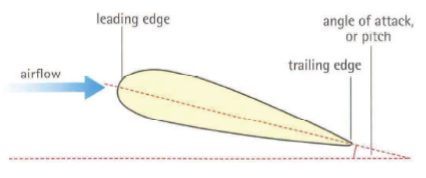Exercise 1. Read the text. Make up schematic notes while reading.
Fluid dynamics and aerodynamics
Fluid dynamics is the study of how gases and liquids flow around objects. The branch of fluid dynamics concerned with airflow - called aerodynamics - is relevant to the design of aircraft, vehicles and structures. Aerodynamic tests can be done in wind tunnels - tunnels through which air is blown at high velocity. Analysis can also be done using computational fluid dynamics (CFD) — computers with complex simulation software.
Drag
Aerodynamic drag (or drag) is the resistance of an object to an airflow. It is measured by the drag coefficient. Objects with a low drag coefficient have little force exerted on them by an airflow. We say they are streamlined. There are different types of drag:
- Form drag is due to the shape of the object.
- Skin friction is the drag caused by air flowing over the surface of the object.
- Pressure drag is the pressure differential between the air upstream of the object (flowing towards it) and the air downstream of it (flowing away behind it). The lower-pressure zone close behind a moving object is often called the slipstream.
- Interference drag depends on the amount of turbulence around the object.
Laminar flow and turbulent flow
In aerodynamics, engineers focus on the airflow in the boundary layer - the air close to the surface of an object. If the object is streamlined, the airflow in the boundary layer will be laminar, following a direct, clean path. With a less streamlined object, the airflow will be turbulent, flowing in a disturbed, messy fashion. A turbulent flow produces more drag than a laminar flow, and generates a bigger wake - that is, the V-shaped /.one of turbulent air behind the object. Wakes contain vortices. A vortex is a twisting flow - like water going down the plughole in a bath.
Aerofoils
Aerofoils are components designed to make air flow in specific ways. They include:
- aircraft wings, which generate lift - that is, upward aerodynamic force
- the blades of plane propellers, and helicopter rotor blades, which generate thrust to propel aircraft through the air
- wings on racing cars, which generate downforce -downward aerodynamic force.
Aerofoils have specially designed profiles (cross-sectional shapes), often with their leading edge - the front edge, relative to the airflow - shaped differently to their trailing edge, at the rear. The behaviour of air around an aerofoil depends on the velocity of the airflow, and also on the angle of attack (or pitch) of the aerofoil - its angle relative to the airflow.

